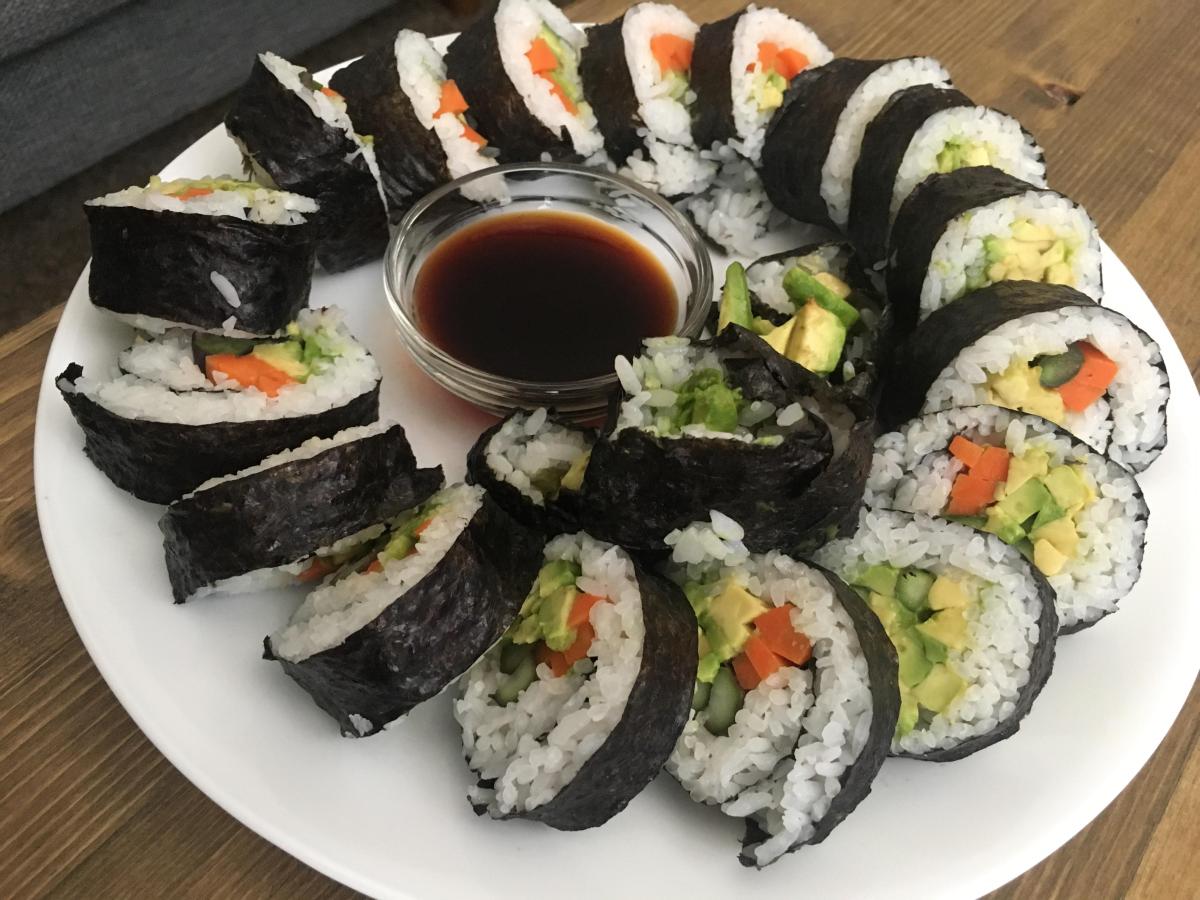Imagine a vibrant lunch spread bursting with color and flavor, a symphony of textures and tastes all crafted from fresh, raw vegan ingredients. This isn’t your average lunchtime fare; we’re diving into the art of creating stunning, creative raw vegan sushi rolls. From mastering the perfect sticky rice to exploring innovative filling combinations and artistic plating techniques, we’ll guide you through each step, transforming a simple meal into a culinary masterpiece.
This guide unveils the secrets to crafting visually appealing and nutritionally packed sushi rolls. We’ll explore diverse filling options, using seasonal fruits and vegetables to enhance both flavor and visual appeal. Learn how to achieve the ideal texture for your vegan sushi rice, and discover various rolling techniques, moving beyond the classic maki roll. Finally, we’ll elevate your dining experience with complementary sauces and plating suggestions, transforming your lunch into a truly memorable occasion.
Step-by-Step Guide

Preparing perfectly sticky raw vegan sushi rice is key to creating delicious and authentic-tasting sushi rolls. The right technique ensures each grain is perfectly cooked, resulting in a delightful texture that holds its shape while offering a pleasing chewiness. This process differs slightly from cooking regular rice, as we aim for a specific level of stickiness without overcooking.
Achieving the ideal texture hinges on the correct rice-to-water ratio and a gentle cooking method. Overcooked rice will be mushy and fall apart, while undercooked rice will be grainy and dry. Following these steps carefully will help you avoid these common pitfalls and create sushi rice that’s perfect for your vegan creations.
Preparing the Rice
- Rinse the Rice: Begin by thoroughly rinsing one cup of short-grain white rice under cold running water. Gently swirl the rice in your hands until the water runs clear, usually taking about 5-7 rinses. This removes excess starch, which is crucial for preventing a gummy texture. Imagine the water becoming progressively clearer with each rinse, a visual indication of the starch being washed away.
- Combine Rice and Water: In a medium saucepan, combine the rinsed rice with 1 1/4 cups of filtered water. The slightly higher water-to-rice ratio compensates for the lack of oil or fat that would typically be present in traditional sushi rice preparation. Observe the rice submerged in the water; it should be completely covered.
- Bring to a Boil: Bring the rice and water mixture to a rolling boil over high heat. The water will rapidly bubble and steam will visibly rise from the pot. This initial high heat helps the rice cook evenly.
- Simmer and Steam: Once boiling, immediately reduce the heat to the lowest setting, cover the saucepan tightly with a lid, and simmer for 15 minutes. During this time, resist the urge to lift the lid; this allows the rice to steam evenly and absorb all the water. The gentle simmering ensures the rice cooks thoroughly without becoming mushy.
- Rest and Fluff: After 15 minutes, remove the saucepan from the heat and let the rice sit, covered, for another 10 minutes. This allows the rice to fully absorb any remaining moisture and become perfectly sticky. Once the resting period is complete, gently fluff the rice with a rice paddle or fork, taking care not to break the grains. The rice should be visibly glossy and slightly sticky.
Achieving Ideal Texture
The key to achieving the perfect texture lies in the balance between cooking time and the rice-to-water ratio. Using a short-grain rice variety is crucial, as its higher starch content contributes to the desired stickiness. The gentle simmering and resting periods are essential to prevent overcooking and ensure each grain cooks evenly, creating a pleasing, cohesive texture.
Undercooked rice will be dry and grainy, while overcooked rice will be mushy and fall apart. The final texture should be slightly sticky, allowing the rice to hold its shape when formed into rolls. A perfectly cooked rice grain will have a slight chewiness, a satisfying textural element in every bite of your vegan sushi.
Creating delicious and visually stunning raw vegan sushi rolls is more accessible than you might think. By mastering the techniques Artikeld here – from preparing the perfect rice to experimenting with diverse fillings and artistic plating – you can elevate your lunchtime experience. This journey into the world of raw vegan sushi is not just about crafting a meal; it’s about creating a vibrant, healthy, and artistically pleasing culinary experience that nourishes both body and soul. Embrace the creativity, experiment with flavors, and enjoy the rewarding process of transforming simple ingredients into a work of edible art.
Popular Questions
Can I make these sushi rolls ahead of time?
It’s best to assemble the rolls shortly before serving to maintain optimal texture and freshness. However, you can prepare the rice and fillings in advance.
What are some good substitutes for nori seaweed?
Large lettuce leaves, cucumber slices, or rice paper can be used as alternatives to nori.
How do I store leftover sushi rolls?
Store leftover rolls in an airtight container in the refrigerator for up to 24 hours. Their texture may slightly change after refrigeration.
Are there any specific tools needed to make these rolls?
While not strictly necessary, a sushi rolling mat and a sharp knife will make the process easier and yield more professional-looking results.


